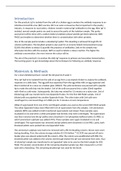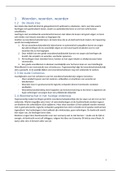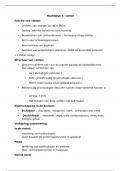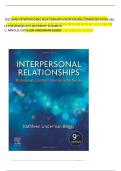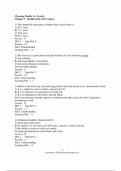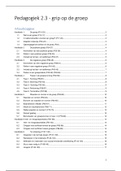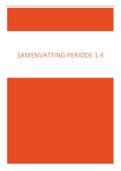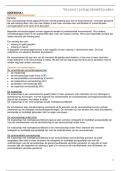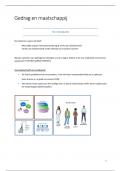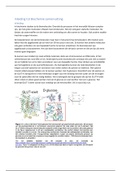Introduction
For this practical, IgY is isolated from the yolk of a chicken egg to analyse the antibody response to an
infectious bronchitis virus (IBV) vaccine. IBV is an avian coronavirus that is important in the poultry
industry. In response to vaccination, chickens transfer maternal IgY antibodies to the egg. After IgY is
isolated, several sample points are used to assess the purity of the isolation sample. This purity
assessment will be done with a sodium dodecyl sulphate polyacrylamide gel electrophoresis (SDS-
PAGE) and enables to determine whether there is contamination with other proteins.
One of the sample points includes a desalted IgY pellet. This desalting is achieved through PD-10
column purification. The desalted sample is also used for an enzyme linked immunosorbent assay
(ELISA) that allows to detect & quantify the presence of antibodies. Salts in the sample may
otherwise interfere with the analysis. ABTS is used to initiate a colour reaction. The higher the
antibody concentration, the more intense the colour will be.
The aim of the practical is to analyse the daily IgY response to primary and secondary immunization.
The learning goal is to gain knowledge about the techniques for following an antibody response.
Materials & Methods
For a more detailed protocol, consult the lab journal of week 3.
First, IgY had to be isolated from the yolk of an egg from a vaccinated chicken to analyse the antibody
response on a daily basis. The egg yolk was separated from the egg white with an egg separator and
then transferred to a sieve on a beaker glass (200ml). The yolk membrane was pierced with a pipette
tip to make the yolk drip into the beaker. 5ml of the yolk was poured into a tube (50ml) together
with 45ml ice cold water. Subsequently, the tube was mixed for 15 minutes on a tube rotor. 2ml of
diluted egg yolk was transferred to two Eppendorf tubes. For the first SDS-PAGE sample, 1ml of
diluted yolk was pipetted into another Eppendorf tube. The other tubes with 2ml yolk were
centrifuged in a microcentrifuge at 14000 rpm for 5 minutes at room temperature.
200μl of supernatant from one of the centrifuged samples was used as the second SDS-PAGE sample.
Two other Eppendorf tubes were filled with 1ml of supernatant from the samples. 1ml ammonium
sulphate (80%) was added to both transferred supernatants and mixed. These samples were
incubated on ice and when a white precipitate had formed, they were centrifuged. The supernatant
was then removed and the IgY pellets were dissolved in 1ml phosphate-buffered saline (1x PBS), to
which ammonium sulphate was added (70%). These samples were again incubated on ice and
centrifuged. The supernatant was removed and IgY pellets were dissolved in 0.5ml PBS. Lastly, both
dissolved pellets were pooled into one Eppendorf tube.
The ammonium sulphate now had to be removed with a PD-10 desalting column. Gloves were worn
during desalting. First, the column storage solution (0.15% Kathon ™ GC/ICP) was poured off and a
beaker glass was placed underneath the column. After the column was equilibrated with PBS, the
dissolved pellet was added to the column and through elution the IgY was extracted from salts. 50μl
of eluted IgY sample was transferred to an Eppendorf tube to be used as the third sample for SDS-
PAGE. The protein concentration of the remaining desalted sample was then measured in a 15ml
tube with a NanoDrop. This remaining desalted IgY was used for the ELISA.
, SDS-PAGE
First, samples were diluted according to the schedule in table 1.
Table 1: Dilution of SDS-PAGE samples.
Sample name Dilution factor Sample (μl) 1x PBS (μl) Total volume (μl)
1 (diluted yolk) 10x 3 27 30
2 (supernatant) 5x 6 24 30
3 (desalted pellet) 0x 30 - 30
5μl sample loading buffer (5x), which contained β-mercaptoethanol, was added to these diluted
samples in a fume hood. The teachers then denatured the proteins and used a precast gel (Mini-
PROTEAN®) to load and run the prepared samples. Lastly, they stained and destained the gel with
GelCode™ Blue Stain Reagent. This enabled to assess the protein bands in all three samples.
Indirect ELISA
First, the antigen solution of inactivated IBV (10μg/ml) was diluted to 1μg/ml by pipetting 400μl of
antigen solution into a 15ml tube together with 3600μl 1x PBS. A labelled 96-well plate could then be
coated by pipetting 100μl antigen solution into each well of column 1 to 6. The plate was sealed and
stored overnight at room temperature.
The plate was emptied and then washed by using an octopipette to add 200μl PBS+Tween
(PBS+0.05%Tween-20) from a reagent reservoir to the wells. The plate was emptied and 200μl
blocking buffer with Tween and bovine erum albumin (PBS+0.05%Tween-20+0.5%BSA) was added to
block the sealed plate during an overnight incubation at 4 oC.
The plate was emptied and subsequently washed three times with 200μl PBS+Tween. 100μl of
desalted IgY samples from all students were added to the wells according to the schedule in table 2.
These primary antibodies were incubated for 30 minutes. The plate was then emptied and washed
five times with 200μl PBS+Tween. 100μl of secondary antibody solution (Goat-anti-chicken IgY),
which was labelled with horseradish peroxidase (HRP), was added per well. This secondary antibody
was also incubated for 30 minutes and then the plate was emptied and washed ten times with 200μl
PBS+Tween. 100μl ABTS ™ substrate was added per well to incubate on a tin foil covered plate for 15
minutes. The absorbance could then be measured at 405nm in a plate reader (Bio-Rad).
For this practical, IgY is isolated from the yolk of a chicken egg to analyse the antibody response to an
infectious bronchitis virus (IBV) vaccine. IBV is an avian coronavirus that is important in the poultry
industry. In response to vaccination, chickens transfer maternal IgY antibodies to the egg. After IgY is
isolated, several sample points are used to assess the purity of the isolation sample. This purity
assessment will be done with a sodium dodecyl sulphate polyacrylamide gel electrophoresis (SDS-
PAGE) and enables to determine whether there is contamination with other proteins.
One of the sample points includes a desalted IgY pellet. This desalting is achieved through PD-10
column purification. The desalted sample is also used for an enzyme linked immunosorbent assay
(ELISA) that allows to detect & quantify the presence of antibodies. Salts in the sample may
otherwise interfere with the analysis. ABTS is used to initiate a colour reaction. The higher the
antibody concentration, the more intense the colour will be.
The aim of the practical is to analyse the daily IgY response to primary and secondary immunization.
The learning goal is to gain knowledge about the techniques for following an antibody response.
Materials & Methods
For a more detailed protocol, consult the lab journal of week 3.
First, IgY had to be isolated from the yolk of an egg from a vaccinated chicken to analyse the antibody
response on a daily basis. The egg yolk was separated from the egg white with an egg separator and
then transferred to a sieve on a beaker glass (200ml). The yolk membrane was pierced with a pipette
tip to make the yolk drip into the beaker. 5ml of the yolk was poured into a tube (50ml) together
with 45ml ice cold water. Subsequently, the tube was mixed for 15 minutes on a tube rotor. 2ml of
diluted egg yolk was transferred to two Eppendorf tubes. For the first SDS-PAGE sample, 1ml of
diluted yolk was pipetted into another Eppendorf tube. The other tubes with 2ml yolk were
centrifuged in a microcentrifuge at 14000 rpm for 5 minutes at room temperature.
200μl of supernatant from one of the centrifuged samples was used as the second SDS-PAGE sample.
Two other Eppendorf tubes were filled with 1ml of supernatant from the samples. 1ml ammonium
sulphate (80%) was added to both transferred supernatants and mixed. These samples were
incubated on ice and when a white precipitate had formed, they were centrifuged. The supernatant
was then removed and the IgY pellets were dissolved in 1ml phosphate-buffered saline (1x PBS), to
which ammonium sulphate was added (70%). These samples were again incubated on ice and
centrifuged. The supernatant was removed and IgY pellets were dissolved in 0.5ml PBS. Lastly, both
dissolved pellets were pooled into one Eppendorf tube.
The ammonium sulphate now had to be removed with a PD-10 desalting column. Gloves were worn
during desalting. First, the column storage solution (0.15% Kathon ™ GC/ICP) was poured off and a
beaker glass was placed underneath the column. After the column was equilibrated with PBS, the
dissolved pellet was added to the column and through elution the IgY was extracted from salts. 50μl
of eluted IgY sample was transferred to an Eppendorf tube to be used as the third sample for SDS-
PAGE. The protein concentration of the remaining desalted sample was then measured in a 15ml
tube with a NanoDrop. This remaining desalted IgY was used for the ELISA.
, SDS-PAGE
First, samples were diluted according to the schedule in table 1.
Table 1: Dilution of SDS-PAGE samples.
Sample name Dilution factor Sample (μl) 1x PBS (μl) Total volume (μl)
1 (diluted yolk) 10x 3 27 30
2 (supernatant) 5x 6 24 30
3 (desalted pellet) 0x 30 - 30
5μl sample loading buffer (5x), which contained β-mercaptoethanol, was added to these diluted
samples in a fume hood. The teachers then denatured the proteins and used a precast gel (Mini-
PROTEAN®) to load and run the prepared samples. Lastly, they stained and destained the gel with
GelCode™ Blue Stain Reagent. This enabled to assess the protein bands in all three samples.
Indirect ELISA
First, the antigen solution of inactivated IBV (10μg/ml) was diluted to 1μg/ml by pipetting 400μl of
antigen solution into a 15ml tube together with 3600μl 1x PBS. A labelled 96-well plate could then be
coated by pipetting 100μl antigen solution into each well of column 1 to 6. The plate was sealed and
stored overnight at room temperature.
The plate was emptied and then washed by using an octopipette to add 200μl PBS+Tween
(PBS+0.05%Tween-20) from a reagent reservoir to the wells. The plate was emptied and 200μl
blocking buffer with Tween and bovine erum albumin (PBS+0.05%Tween-20+0.5%BSA) was added to
block the sealed plate during an overnight incubation at 4 oC.
The plate was emptied and subsequently washed three times with 200μl PBS+Tween. 100μl of
desalted IgY samples from all students were added to the wells according to the schedule in table 2.
These primary antibodies were incubated for 30 minutes. The plate was then emptied and washed
five times with 200μl PBS+Tween. 100μl of secondary antibody solution (Goat-anti-chicken IgY),
which was labelled with horseradish peroxidase (HRP), was added per well. This secondary antibody
was also incubated for 30 minutes and then the plate was emptied and washed ten times with 200μl
PBS+Tween. 100μl ABTS ™ substrate was added per well to incubate on a tin foil covered plate for 15
minutes. The absorbance could then be measured at 405nm in a plate reader (Bio-Rad).


